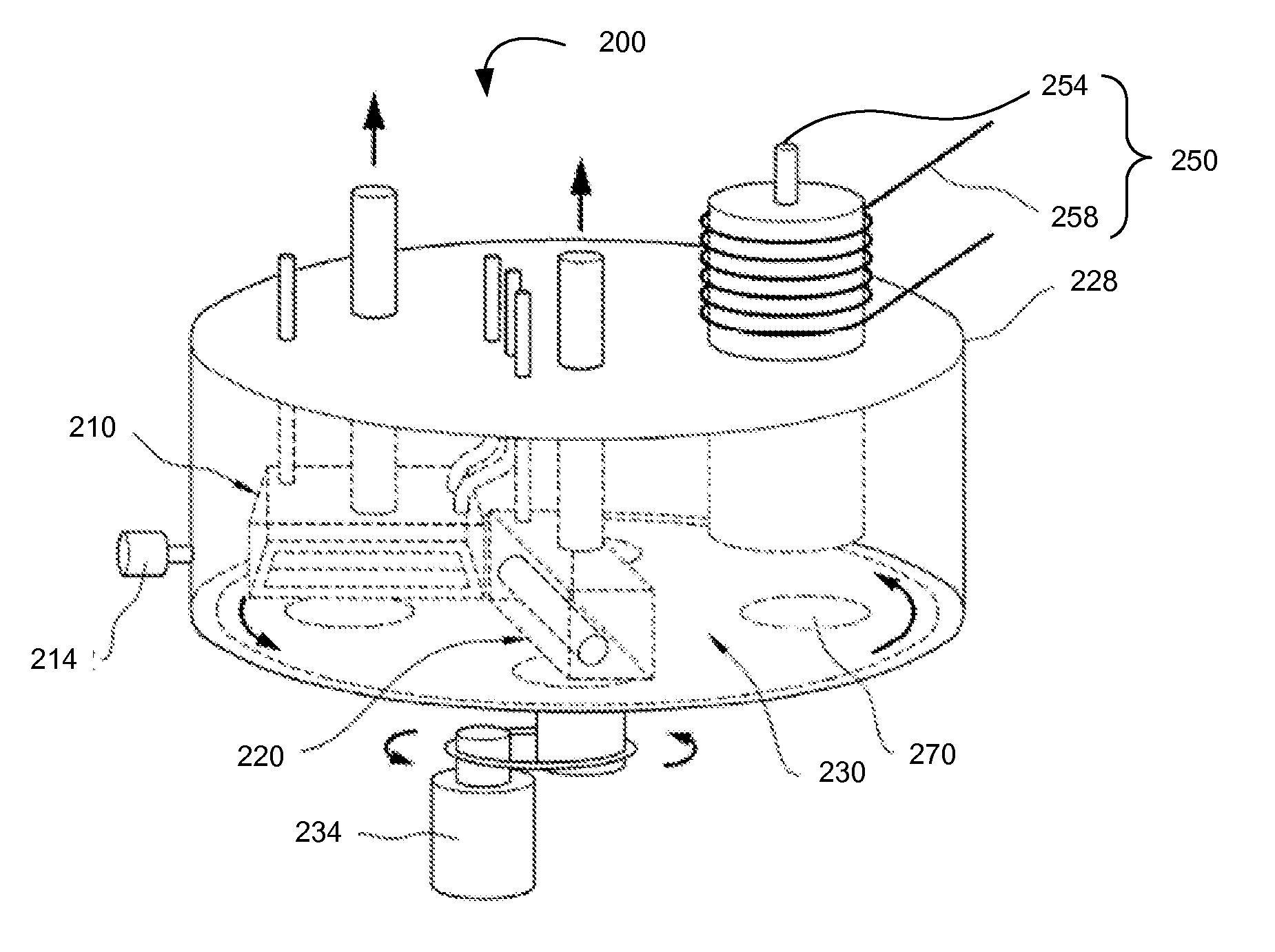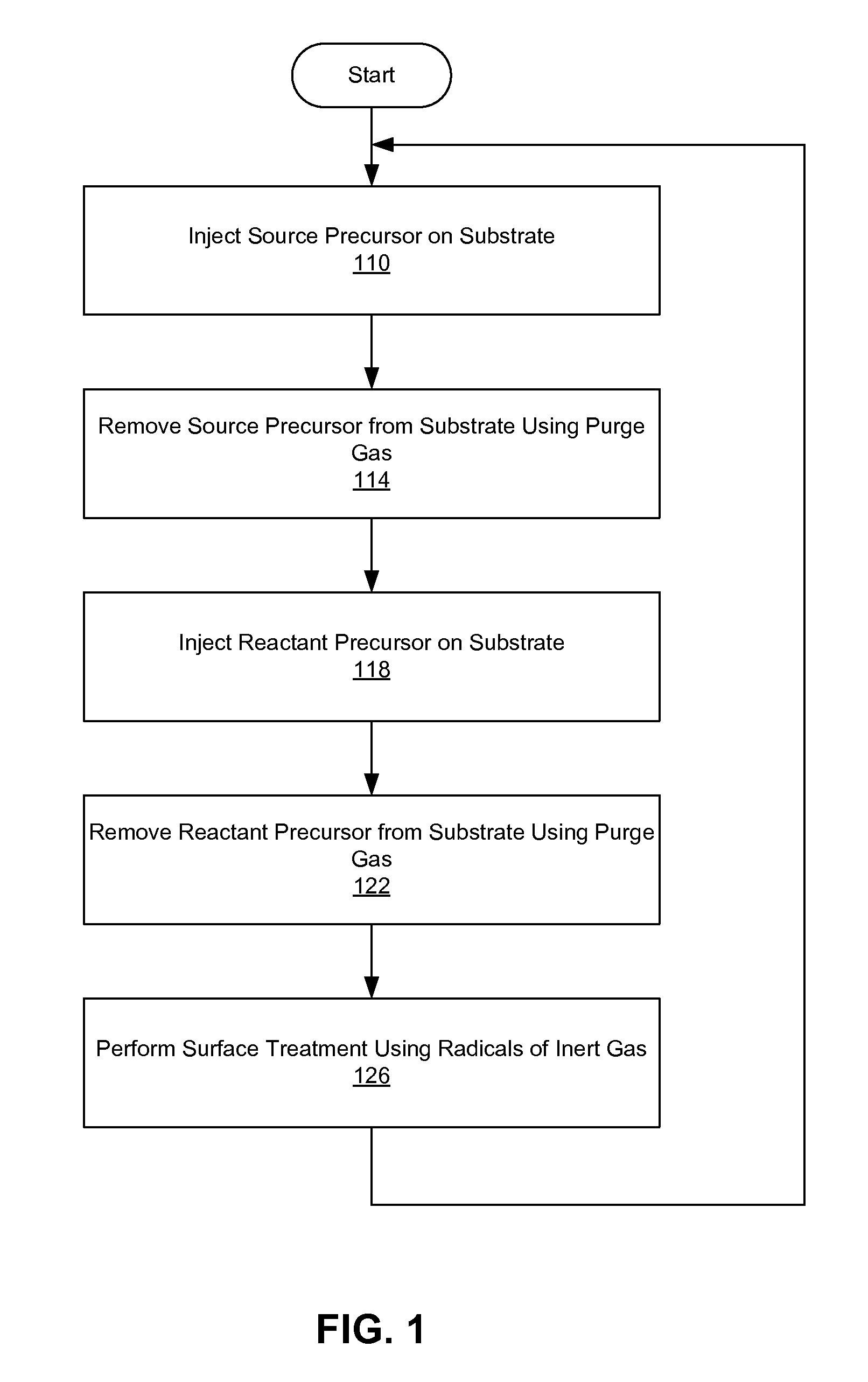Treating Surface of Substrate Using Inert Gas Plasma in Atomic Layer Deposition
a technology of inert gas and substrate, which is applied in the direction of plasma technique, natural mineral layered products, aluminium compounds, etc., can solve the problems of reducing the overall yield of fabricated substrates and excessive adsorbed, and achieve the effect of increasing the deposition ra
- Summary
- Abstract
- Description
- Claims
- Application Information
AI Technical Summary
Benefits of technology
Problems solved by technology
Method used
Image
Examples
Embodiment Construction
[0024]Embodiments are described herein with reference to the accompanying drawings. Principles disclosed herein may, however, be embodied in many different forms and should not be construed as being limited to the embodiments set forth herein. In the description, details of well-known features and techniques may be omitted to avoid unnecessarily obscuring the features of the embodiments.
[0025]In the drawings, like reference numerals in the drawings denote like elements. The shape, size and regions, and the like, of the drawing may be exaggerated for clarity.
[0026]Embodiments relate to depositing one or more layers of atomic layers on a substrate using atomic layer deposition (ALD) where the surface of the substrate is treated with radicals of inert gas before subjecting the substrate to further deposition of atomic layers. The exposure of the surface to the radicals of the inert gas appears to change the surface state of the deposited layer to a state more amenable to absorb and bin...
PUM
| Property | Measurement | Unit |
|---|---|---|
| Time | aaaaa | aaaaa |
| Electric potential / voltage | aaaaa | aaaaa |
| Vacuum | aaaaa | aaaaa |
Abstract
Description
Claims
Application Information
 Login to View More
Login to View More - R&D
- Intellectual Property
- Life Sciences
- Materials
- Tech Scout
- Unparalleled Data Quality
- Higher Quality Content
- 60% Fewer Hallucinations
Browse by: Latest US Patents, China's latest patents, Technical Efficacy Thesaurus, Application Domain, Technology Topic, Popular Technical Reports.
© 2025 PatSnap. All rights reserved.Legal|Privacy policy|Modern Slavery Act Transparency Statement|Sitemap|About US| Contact US: help@patsnap.com



